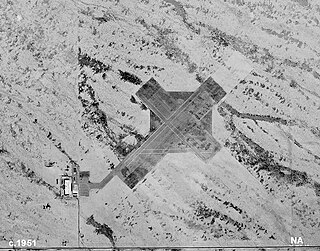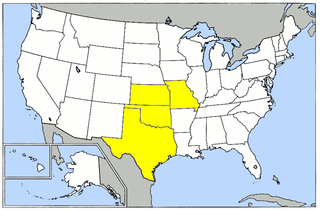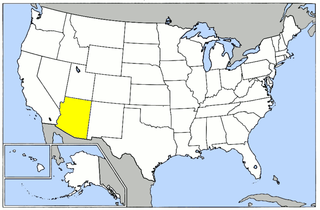- Arledge Field, Stamford, Texas
- 308th Flying Training Detachment [2]
- Operated by: Stamford Flying School and Lou Foote Flying Service and Coleman Flying School [4]
- Opened: August 1941, Closed: August 1944 (PT-17, PT-19) [5]
- Controlled four auxiliary airfields
- Avenger Field, Sweetwater, Texas
- 319th Flying Training Detachment [2]
- 2563d Army Air Forces Base Unit (Women Air Service Pilots), April 1944
- Operated by: Aviation Enterprises. Conducted Primary, Basic and Advanced (WASP) training [4]
- Opened: May 1942, Closed: December 1945 (PT-17, PT-19) [6]
- Controlled five auxiliary airfields
- Bruce Field, Ballinger, Texas
- 306th Flying Training Detachment [2]
- Operated by: Fred Harmon Flying School [4]
- Opened: October 1941, Closed: October 1944 (PT-19) [7]
- Controlled five auxiliary airfields
- Chickasha Municipal Airport, Chickasha, Oklahoma
- 316th Flying Training Detachment [2]
- 2549th Army Air Forces Base Unit (Contract Pilot School, Primary), April 1944
- Operated by: Wilson-Bonfils Flying School [4]
- Opened: October 1941, Closed: August 1945 (PT-17, PT-19) [8]
- Controlled four auxiliary airfields
- Cimarron Field, Oklahoma City, Oklahoma
- 310th Flying Training Detachment [2]
- Operated by: Oklahoma Air College [4]
- Opened: October 1941, Closed: May 1944 (PT-19) [9]
- Controlled three auxiliary airfields
- South Coleman Airport, Coleman, Texas
- 304th Flying Training Detachment [2]
- Operated by: Coleman FLying School, Limited [4]
- Opened: July 1941, Closed: November 1944 (PT-19) [10]
- Controlled four auxiliary airfields
- Corsicana Field, Corsicana, Texas
- 301st Flying Training Detachment [2]
- Operated by: Air Activities of Texas [4]
- Opened: April 1941, Closed: November 1944 (PT-19) [11]
- Controlled six auxiliary airfields
- Cuero Municipal Airport, Cuero, Texas
- 303d Flying Training Detachment [2]
- Operated by: Brayton Flying Services, Inc. [4]
- Opened: May 1941, Closed: August 1944 (PT-17, PT-19) [12]
- Controlled four auxiliary airfields
- Gibbs Field, Fort Stockton, Texas
- 313th Flying Training Detachment [2]
- Operated by: Pacific Air School Limited [4]
- Opened: June 1942, Closed: April 1944 (PT-17, PT-19) [13]
- Controlled two auxiliary airfields
- Garner Field, Uvalde, Texas
- 305th Flying Training Detachment [2]
- 2566th Army Air Forces Base Unit (Contract Pilot School, Primary), April 1944
- Operated by: Hangar Six, Incorporated [4]
- Opened: October 1941, Closed: July 1945 (PT-13, PT-19) [14]
- Controlled four auxiliary airfields
- Grider Field, Pine Bluff, Arkansas
- 312th Flying Training Detachment [2]
- Operated by: Pine Bluff School of Aviation [4]
- Opened: April 1941, Closed: October 1944 (PT-19) [15]
- Controlled five auxiliary airfields
| - Harvey Parks Airport, Sikeston, Missouri
- 311th Flying Training Detachment [2]
- Operated by: Missouri Institute of Aeronautics [4]
- Opened: January 1941, Closed: November 1944 (PT-18, PT-19) [16]
- Controlled seven auxiliary airfields
- Hatbox Field, Muskogee, Oklahoma
- 315th Flying Training Detachment [2]
- Operated by Spartan Aircraft Company and Spartan School of Aeronautics [4]
- Opened: January 1941, Closed: June 1944 (PT-19) [17]
- Controlled three auxiliary airfields
- Hicks Field, Fort Worth, Texas
- 307th Flying Training Detachment [2]
- Operated by: Texas Aviation School and W. F. Long Flying School. [4]
- Opened: September 1941, Closed: May 1944 (PT-19) [18]
- Controlled three auxiliary airfields
- Jones Field, Bonham, Texas
- 302d Flying Training Detachment [2]
- Operated by: Bonham Aviation School [4]
- Opened: September 1941, Closed: November 1944 (PT-19) [19]
- Controlled four auxiliary airfields
- Miami Municipal Airport, Miami, Oklahoma
- 322d Flying Training Detachment [2]
- Operated by: Spartan School of Aeronautics [4]
- Opened: June 1941, Closed: March 1944 (PT-17, PT-19) [20]
- Controlled four auxiliary airfields
- Mustang Field, El Reno, Oklahoma
- 320th Flying Training Detachment [2]
- Operated by: Midwest Air School [4]
- Opened: February 1943, Closed: November 1944 (PT-17, PT-19) [21]
- Controlled four auxiliary airfields
- Parks Metropolitan Airport, East St. Louis, Illinois
- 309th Flying Training Detachment [2]
- Operated by: Parks Air College [4]
- Opened: June 1939, Closed: August 1943 (PT-13, PT-17, PT-19) [22]
- Controlled one auxiliary airfield
- Ponca City Municipal Airport, Ponca City, Oklahoma
- 323d Flying Training Detachment [2]
- Operated by: Darr School of Aeronautics [4]
- Opened: June 1941, Closed: May 1944 (PT-17, PT-19) [20]
- Tulsa Municipal Airport, Tulsa, Oklahoma
- 314th Flying Training Detachment [2]
- Operated by: Spartan School of Aeronautics [4]
- Opened: June 1939, Closed: August 1944 (PT-3A, PT-17, PT-19) [23]
- Controlled five auxiliary airfields
- Victory Field, Vernon, Texas
- 317th Flying Training Detachment [2]
- Operated by: Hunter Flying Service and Richey Flying Service. [4]
- Opened: December 1941, Closed: August 1944 (PT-19) [24]
- Controlled five auxiliary airfields
|






















